How To Save A Dying Monstera Plant? (Possible Problems+Fix)
Monstera plants are so easy to care for and maintain. However, not everyone is good at keeping plants alive. Maybe you are someone who doesn’t remember watering their plant, or maybe you went on a vacation and returned to find your monstera dying. Whatever the reason, maybe, you want to save your dying monstera, and here is how you can do it.
Here are the steps to save a dying monstera plant:
- Move the plant to a bright indirect light spot.
- Check the soil and make sure it’s not soggy or bone dry.
- Water the plant if the top layer of the soil gets dry.
- Increase humidity around the plant by using a humidifier.
- Mist the monstera with neem oil solution to eliminate any possible pests.
- Check the drainage holes and make sure the pot or the soil doesn’t hold the water.
- Repot the plant if the soil is soggy or the plant shows signs of root rot.
Inadequate watering, improper lighting, low humidity, or fluctuating temperature levels are major causes of a dying monstera plant.
Apart from this, blockage of drainage and a pest infestation can also result in wilting of monstera. You can save your monstera from dying by identifying the problem and fixing the issue.
Don’t fret because we have your back. We have listed all the potential causes, their solutions, and further prevention to help your monstera plant out.
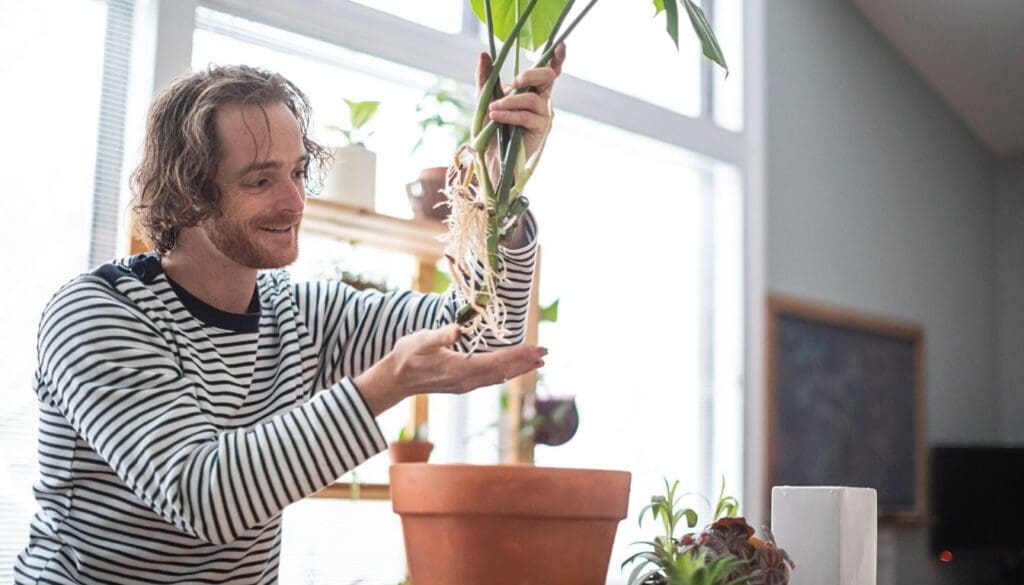
Please note: Simplify Plants is reader-supported. Some links in the post are affiliate links and I get a commission from purchases made through links in the post.
Can I save my monstera plant?
You can save your monstera plant with quick action as soon as you identify your monsteras are in trouble. Your monsteras give many signs before it comes to the stage of dying.
With the right knowledge of what the signs mean and an understanding of your plant’s needs, you can fix the problem at an early stage. Even if the condition is severe, you can still save your monstera plant.
Signs your monstera is dying
If your monstera is in trouble, then it will give you some visual clues. It is crucial to identify these signs and take appropriate action to save your monstera from wilting.
These signs include:
- Yellow or brown leaves
- Foul odor from soil
- Saturated soil
- Droopy Leaves
- Slow growth
- Leaf Blight
- Black spots on the leaves
- Yellowing foliage
- Leaves drop
- Foul smell
If you notice any of these signs then immediately hop in for a rescue.
How to revive a dying monstera plant?
It’s quite stressful, but not too hard to revive your monstera. We know easy to say than to do, but we assure you to get your monstera back to life.
Let’s go ahead with details of what might be the possible problems and what needs to be fixed to save your monstera.
Save an overwatered monstera plant
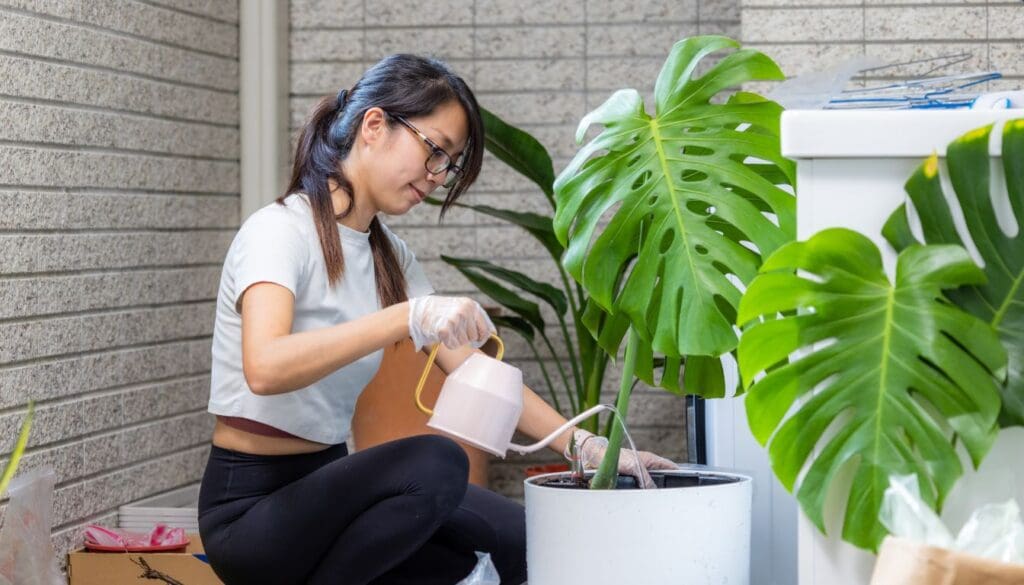
Possible Problems: Overwatering is the easiest way to ruin your healthy plant. There is two primary cause of overwatering.
Either we care for our plants too much, or we are ignorant about our plant’s need. When a monstera plant is overwatered, they become vulnerable to diseases, pests, and other related issues.
The problems your plant face are:
- Yellow leaves
- Attract pests
- Leaves start shedding
- Brown leaves.
- Pale leaves
- Root rot
Solution:
- When you have overdone something, always start with pausing whatever you are doing.
- Stop watering.
- Cut the damaged parts of the plant.
- Check the drainage system of the pot.
- Water next when the soil is completely dry and so on.
Prevention:
- Do not follow any watering routine blindly.
- Water plants make sure excess water is passing through the drainage holes.
- Use a finger/skewer method to check soil moistness.
- Water only when the soil needs it.
- Don’t let the roots and soil sit in water for too long.
- Season affects the watering needs of the plant.
- Summer calls for more frequent watering. Whereas during winter, the soil remains moist for a long time. Thus the plant needs less water.
You can also get a moisture meter to determine the need of water in your monstera plant.
Also read: How often should you water your monstera plant?
Save an under-watered monstera plant

Possible Problems: Underwatering usually happens when we don’t remember to water our plants, or we get lazy, or we are out on vacation. In either case, your monstera will show the following signs:
- Discoloration
- Stressed leaves
- Brown edges
- Brown leaves
- Slow growth
- Droopy leaves
- The leaves look lifeless
Solution:
- Trim any damaged leaves.
- Water your monsteras first and let the water drain out completely.
- Water it again. That will help to retain moisture that your plant might have lost.
- Mist around often to improve the dry condition of the plant.
- Make sure excess water is drained out every time you water your monstera.
- Bottom watering can be used mostly for people who are not able to water their plants adequately.
Prevention:
- Make a routine to check the soil of your monstera every 4-5 days.
- You can extend to 5-6 days during winters as the sun’s intensity is low, so the soil will take more time to dry.
- Always keep in mind that season and other cultural conditions affect the watering needs of the plant.
- Always keep a check on the soil to avoid the dehydrated plant.
- Check the soil mix; it should not be too draining.
- Use the bottom watering method for adequate watering.
- Take a tray, fill it with pebbles, and pour water to submerge the pebbles.
- Keep the pot on the tray, and make sure the water doesn’t touch the pot’s bottom.
- The soil and roots will take up water through capillary action. Keep the pot for about an hour.
Also read: How to tell if you are overwatering or underwatering your plant?
Save a monstera with lighting issues

Providing adequate lighting to your monstera plant is something most people struggle with. Most of us either have too much light or too little light for our plants to thrive. Maintaining a balance is the key to a healthy and thriving monstera plant.
Too much light:
- Droopy leaves
- Brown leaves
- Sunburn
Low light:
- Droopy leaves
- Leggy plant
- Thin stalks
Solution:
- In any light condition, you need to move your plant to better and right light exposure. The perfect spot would be where there is moderate indirect light available for your monstera.
- Keep near a window or balcony, make sure no or considerably less direct sunlight is pouring in. Balance with indirect and direct light is essential for healthy monstera.
Prevention:
- Never keep your monstera under direct sun for more than 2 hours.
- They will thrive in low light but will not show much growth.
- The best spot is where they can get early sun and late sun.
- If you cannot help but have the direct sun on your monsteras for too long, use sheer curtains to reduce the light intensity.
- If kept outdoor, put a shade over the plant to guard against the direct sun.
You can also get some grow lights if you feel your monstera is not getting enough light. Try this amazing SANSI 15W LED Grow Light Bulb, which I got from amazon.
Also read: How much light do monstera need?
Save a monstera suffering from Root rot

Possible Problems: Root rot is a condition where the roots of your monstera start decaying. It usually happens when the roots of your plant cannot breathe.
Either the soil is too compact, or you have overwatered your monstera plant. In either case, you will notice the following signs in your monstera plant:
- Leaves are losing their shine and luster.
- Yellow leaves
- Wilting and shedding of leaves
- Severe damage to the roots, the plant may die within ten days.
- Discolored leaves
- Leaves developing black spots
- Soft and brown roots
- Mushy and slimy roots
- Stunted growth
Solution:
- Snip away damaged leaves using sterilized scissors.
- Take your monsteras out of the pot by holding the lower part of the plant and pull the plant.
- Inspect the roots gently without harming your plant.
- If all the roots are mushy, soft brown, and weak, then it’s quite late to get your plant back to life.
- But if there are any white and firm roots (healthy ones) are there, then you have the chance to revive your monstera.
- Wash your plant under running water. You can use soap water too to kill bacteria and fungus.
- You can keep the plant out for a few hours to get some fresh air (you can wrap the roots with a dank towel also while keeping out).
- Add 10 ml of hydrogen peroxide to 200 ml of water and soak the roots in this solution for a few minutes.
- Take a pot, should be sterilized.
- Prepare a well-draining and sterilized potting mix or buy from the market.
- Keep a line of stones or pebbles at the bottom of the pot (to catch excess water).
- Add soil and now plant your monsteras.
- Fertilize after a few days to boost growth and water adequately.
Prevention:
- To prevent root rot, you should keep an eye on your plant. Spend some quality time to detect any issue with your monstera plant regularly.
- Provide a proper environment to keep your plant flourishing.
- Watering right is very important to avoid soggy soil, which will lead to bacterial growth.
- Check the drainage system. If the excess water comes out of the drainage holes within 2-3 minutes of watering, then it’s sound.
- Soil mix is of utmost importance. It should be porous and loaded in nutrients for the best results.
Also read: Root rot in monstera
Save a monstera from pest Infestation

Possible Problems: Pests are a common problem that every plant owner needs to deal with. There is a wide variety of pests that can attack our monstera plant.
Some common ones are Spider mites, Scale insects, Mealybugs, Aphid, Gnats, etc. If your monstera is having a pest problem, then you will notice the following signs:
- Slow growth
- Leaves start dropping
- Speckled leaves
- Holes in the leaves
- Leaf blight
- Distorted leaves and stems
- White spots on the foliage
Solution:
- Firstly, isolate the infested plant and cut off damaged leaves.
- Wipe down the leaves thoroughly with warm soapy water.
- Pick any bugs you see with your hands while treating them.
- Make a solution by adding 1 tsp dish soap (without bleach) and 1 tsp neem oil to 1-liter water. Spray all over the plant. Repeat every week until the condition improves.
- Isopropyl alcohol with water also works excellent on pests. Take their half parts and add some neem oil.
- Use cotton to apply this solution to the visible bugs and then spray over the plant, preferably in the late evening, for the solution to work best.
Prevention:
- Inspecting your plant every few days is the best way to keep away any pests infestation.
- Use a neem oil spray to control any pests infestation in the initial stage or to prevent any infestation.
- Over-fertilizing and over-watering should be avoided.
Also read: Do monstera attract bugs?
Save a monstera kept in inappropriate temperature

Possible Problems: Although the temperature is not one of the significant factors that can affect the plant’s health, it cannot be ignored either.
If you place your monstera in a spot where the temperature fluctuates regularly, then your plant is likely to suffer from a temperature shock. The signs of it are:
- Discolored/Disfigured leaves
- Puckering of young leaves
- Brown blotches in mature leaves
- Shrunken leaves
- Distressed plant
Solution:
- Snip off damaged leaves.
- The temperature level should be regulated and maintained above 65 degrees Fahrenheit.
- Keep your plant away from direct sun.
- During low temperatures, move them to a warmer spot.
Prevention:
- The ideal temperature for your monsteras lies between 65 degrees Fahrenheit to 85 degrees Fahrenheit.
- In any condition, don’t keep your monstera below 40 degrees Fahrenheit. It may die.
- Move your plant to a safer spot if the temperature goes beyond 85 degrees Fahrenheit.
- Keep near refined light sources to avoid any temperature stress.
- Don’t keep your plant close to vents, radiators, etc.
- Keep in the ideal temperature for healthy monstera.
Save a monstera with humidity issues

Possible Problems: Humidity plays a vital role in the growth of the plant. Belonging from a tropical environment, the monstera plant does need a warm and humid environment to thrive. If your monstera doesn’t get enough humidity, then they are likely to show certain signs. These include:
- Dried Leaves
- Brown tips
- Brown spots
Solution:
- Increase humidity levels around your monsteras plant.
- Misting a couple of times a day can raise humidity levels around the plant.
- Give your monsteras a quick shower to immediately raise the steam. It will also wash off any dirt on them.
- You can place your monstera in the bathroom if the lighting is right there. The bathroom is usually wet all the time, which will significantly help to boost humidity levels.
- Use a humidifier to raise and have consistent humidity levels easily. There are many varieties of humidifiers with different functions available in the market.
Prevention:
- Always maintain humidity levels above 60% around monsteras.
- Do not underwater.
- Keep over pebble trays to keep them moist.
- Don’t keep near the direct sun.
- Use a humidifier to maintain the ideal humidity range.
You can try this amazing Homech humidifier from amazon.
Also read: Does monstera like to be misted?
Last words
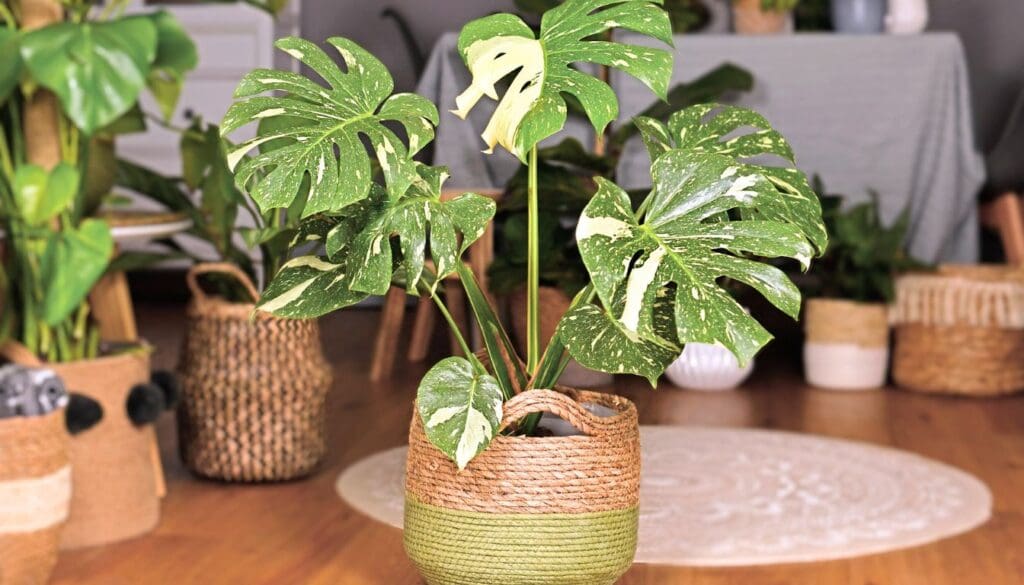
Monsteras can be kept happy if you take consistent care and some attention.
- All you need to take care of is their cultural needs. Balanced temperature levels and high humidity is what your monstera prefer as they keep fluctuating.
- Monitor your watering routine and keep checking the soil to avoid any watering issues. Season affects the needs of monstera, so change your routine as the season changes.
- Any kind of light will do, whether natural or artificial sources but should be filtered. You can use translucent curtains.
- Keep rotating the plant for even distribution of light.
- Use a damp cotton cloth to clean the leaves to keep them shining. It will also facilitate efficient photosynthesis.
- Balance is a crucial factor in keeping your monsteras growing and bushier.
Sources: Leaf morphogenesis in Monstera, Monstera overview, Common insect pests and diseases.
Recommended Garden Supplies
| Product Image | Our Recommended Gardening Supplies | Check Offers! |
|---|---|---|
Top Top
Top
Top
Top
Top
Top
Top
Top | rePotme Houseplant and Tropical Classic Potting Soil Mix | Check Offer On Amazon |
 Top
Top
Top
Top
Top
Top
Top
Top | Espoma Organic Indoor Plant Food | Check Offer On Amazon |
 Top
Top
Top
Top
Top
Top
Top
Top | GooingTop LED Grow Light 6000K Full Spectrum Clip Plant Growing Lamp | Check Offer On Amazon |
 Top
Top
Top
Top
Top
Top
Top
Top | Soil Moisture Meter | Check Offer On Amazon |
 Top
Top
Top
Top
Top
Top
Top
Top | Govee Hygrometer Thermometer, Bluetooth Enabled! | Check Offer On Amazon |
 Top
Top | LEVOIT Humidifiers for Large Room(Best For Plants) | Check Offer On Amazon |
 Top
Top
Top
Top
Top
Top
Top
Top | Upgraded DIY Automatic Drip Irrigation Kit, 15 Potted Houseplants Support | Check Offer On Amazon |
 Top
Top
Top
Top
Top
Top
Top
Top | Stainless Steel Heavy Duty Gardening Tool Set | Check Offer On Amazon |
 Top
Top
Top
Top
Top
Top
Top
Top | Bonide Insecticidal Soap | Check Offer On Amazon |
 Top
Top
Top
Top
Top
Top
Top
Top | Bonide 32 oz Spray Neem Oil for Organic Gardening | Check Offer On Amazon |
 Top
Top
Top
Top
Top
Top
Top
Top | Garden Safe Fungicide | Check Offer On Amazon |

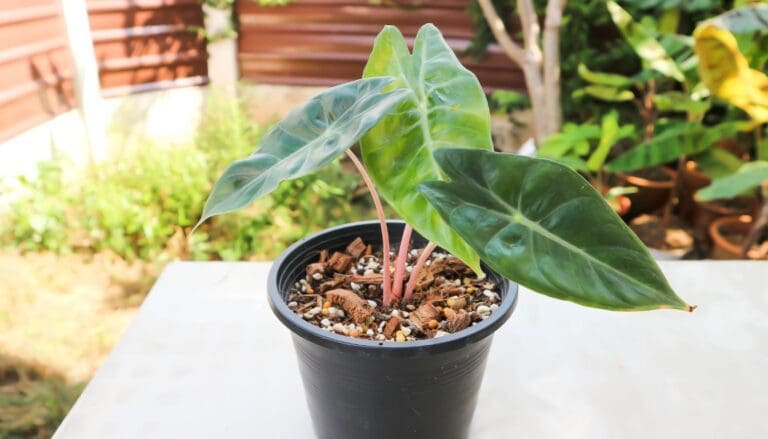


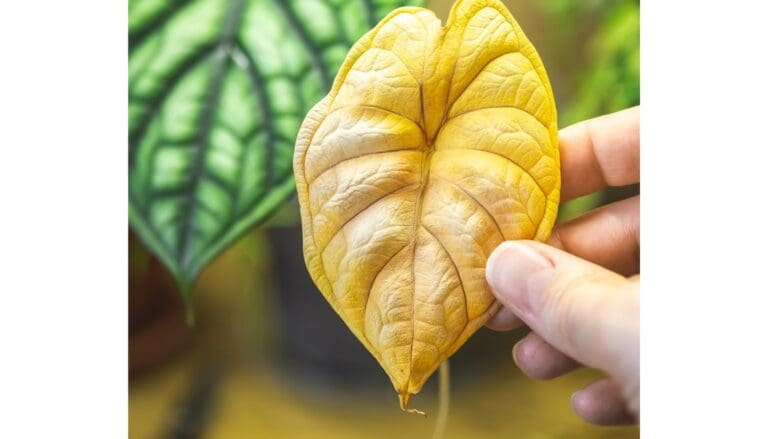

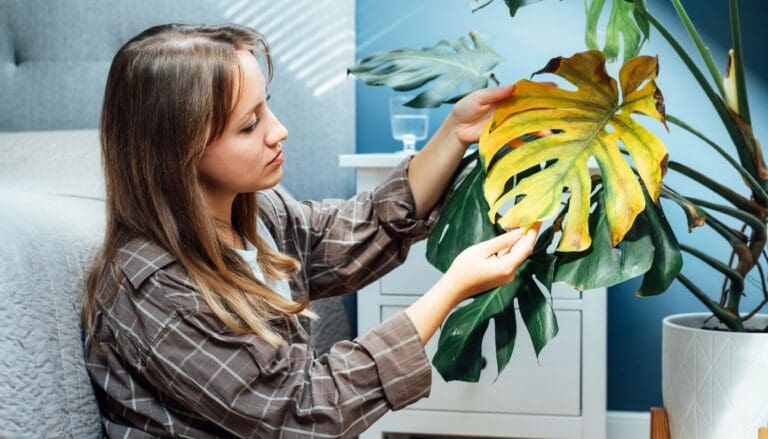
Dear sir/madam,
I have a very distressed Monstera. It is quite old (+45 years) and has a very long stem. From this stem there were many leaves, roots and air roots growing happily. Until a short while ago.
The roots got root rot and died off. This caused the plant to loose the leaves.
The air roots are still visible and the stem seems like there is still life in it.
There is also a small green shoot coming out of the stem which gives me hope!
But, I realise it needs roots and I have no idea how to get the stem to grow them. Which part should I put in water?
Can you help me? I can also send pictures or jump on a video call to show you the plant.
Thanks for helping! I hope to hear from you soon.
Hey,
Thanks for going through our blog.
If the plant’s roots are left, even if a small part, then try to repot it to a new pot with fresh soil.
If not, You can take the aerial root part and make a just below that node and then apply some rooting hormone and try growing it back in the water or by using LICA.
Also, you need to change the water every 2-3 days and take good care of the plant until the stems roots and settles back!
Hope that helps!
You can also share the images with our support mail given at contact us page!
Thank you for sharing indeed great looking !